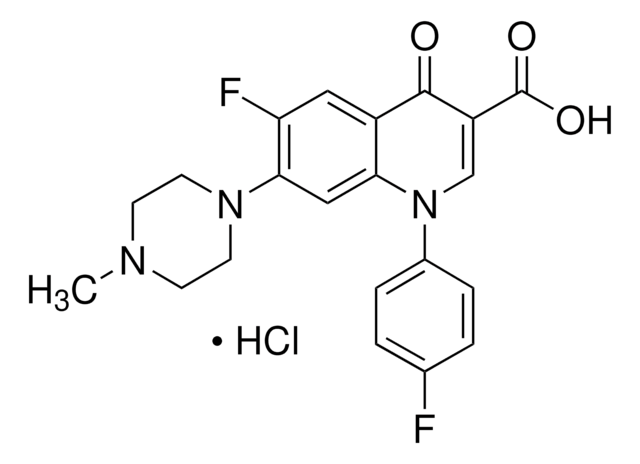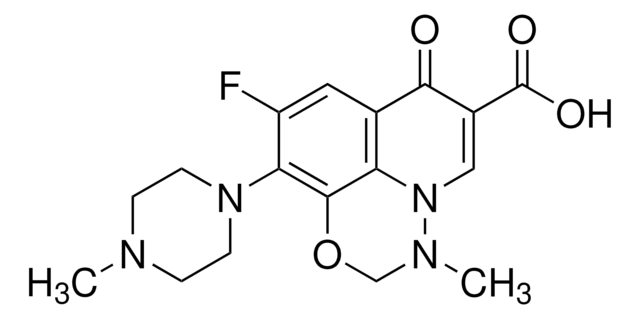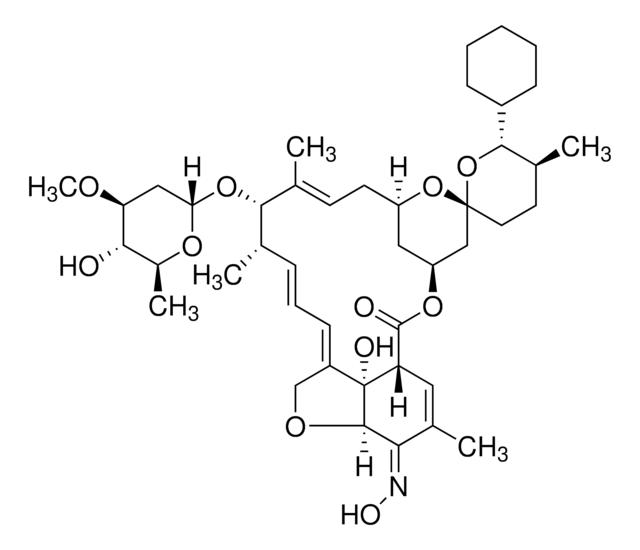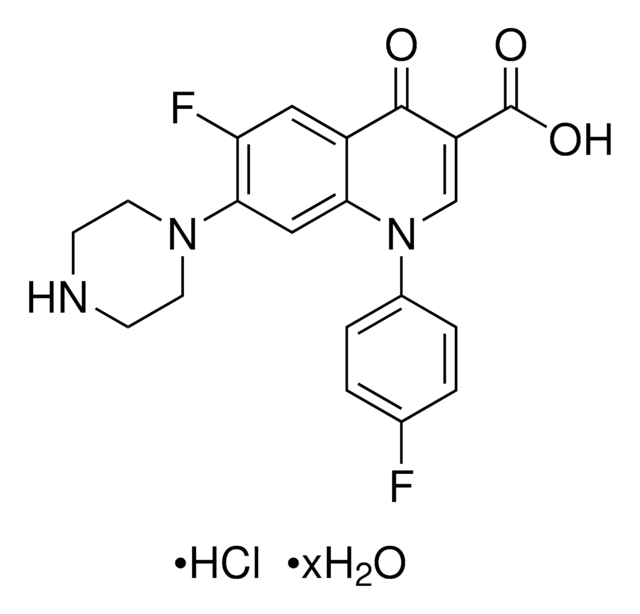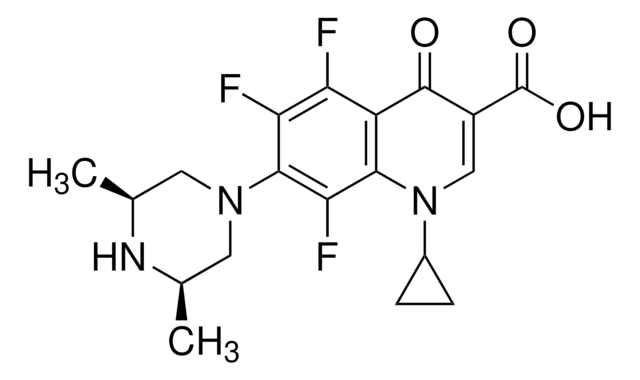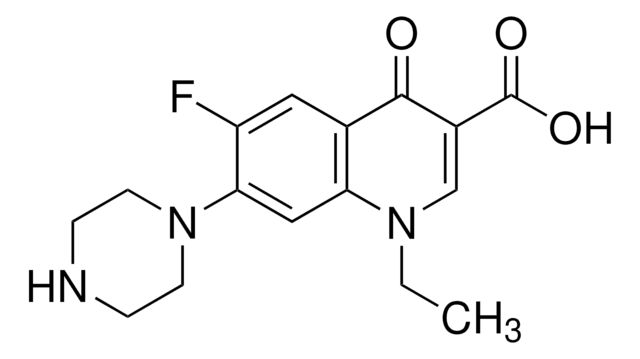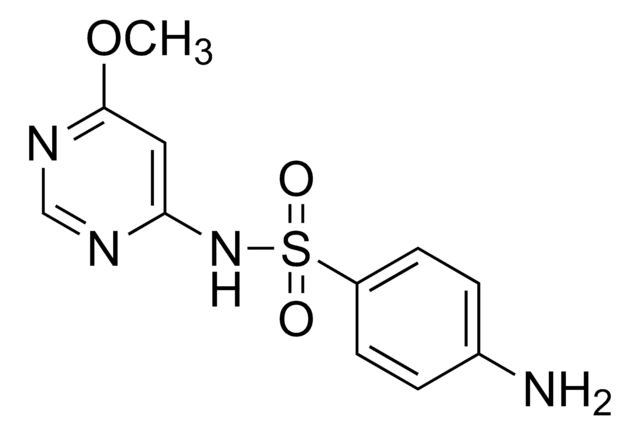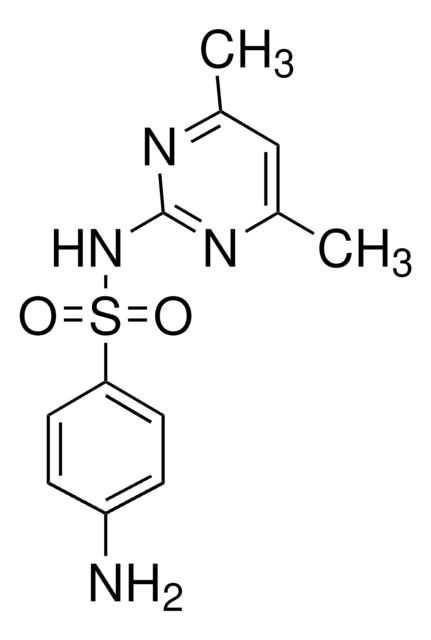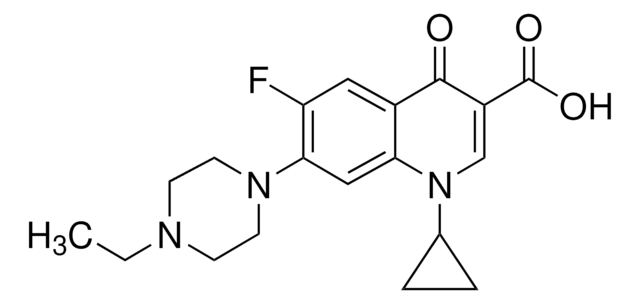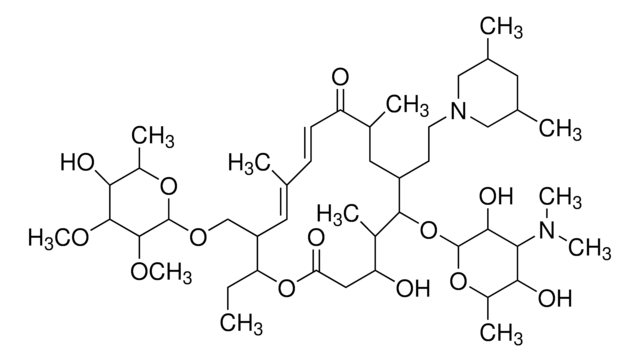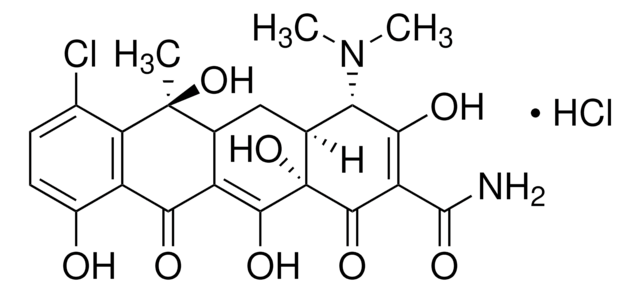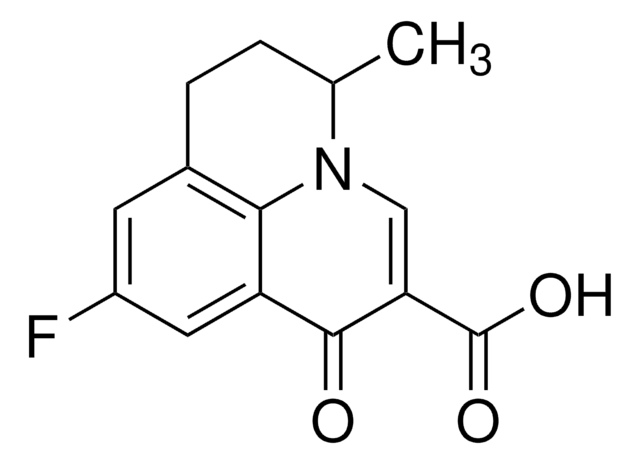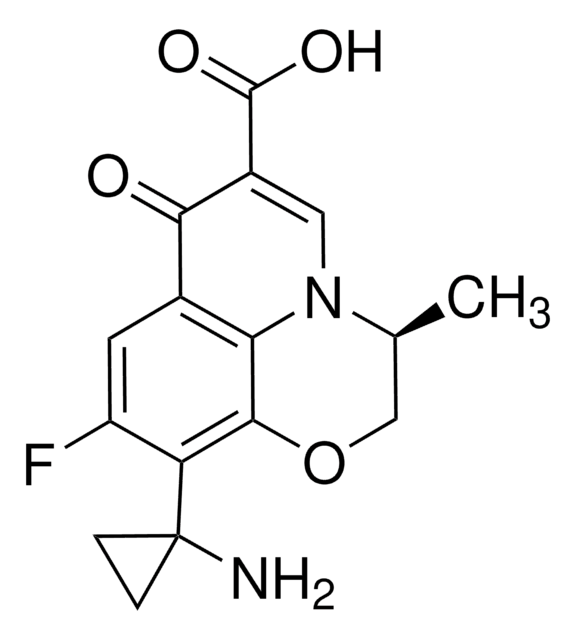Kluczowe dokumenty
33700
Danofloxacin
VETRANAL®, analytical standard
Synonim(y):
Advocin®
About This Item
Polecane produkty
klasa czystości
analytical standard
Poziom jakości
linia produktu
VETRANAL®
okres trwałości
limited shelf life, expiry date on the label
metody
HPLC: suitable
gas chromatography (GC): suitable
Zastosowanie
forensics and toxicology
pharmaceutical (small molecule)
veterinary
Format
neat
ciąg SMILES
CN1C[C@@H]2C[C@H]1CN2c3cc4N(C=C(C(O)=O)C(=O)c4cc3F)C5CC5
InChI
1S/C19H20FN3O3/c1-21-7-12-4-11(21)8-22(12)17-6-16-13(5-15(17)20)18(24)14(19(25)26)9-23(16)10-2-3-10/h5-6,9-12H,2-4,7-8H2,1H3,(H,25,26)/t11-,12-/m0/s1
Klucz InChI
QMLVECGLEOSESV-RYUDHWBXSA-N
Szukasz podobnych produktów? Odwiedź Przewodnik dotyczący porównywania produktów
Zastosowanie
Informacje prawne
Hasło ostrzegawcze
Warning
Zwroty wskazujące rodzaj zagrożenia
Zwroty wskazujące środki ostrożności
Klasyfikacja zagrożeń
Aquatic Chronic 3 - STOT RE 2
Kod klasy składowania
11 - Combustible Solids
Klasa zagrożenia wodnego (WGK)
WGK 2
Temperatura zapłonu (°F)
Not applicable
Temperatura zapłonu (°C)
Not applicable
Środki ochrony indywidualnej
Eyeshields, Gloves, type N95 (US)
Wybierz jedną z najnowszych wersji:
Certyfikaty analizy (CoA)
Nie widzisz odpowiedniej wersji?
Jeśli potrzebujesz konkretnej wersji, możesz wyszukać konkretny certyfikat według numeru partii lub serii.
Masz już ten produkt?
Dokumenty związane z niedawno zakupionymi produktami zostały zamieszczone w Bibliotece dokumentów.
Klienci oglądali również te produkty
Nasz zespół naukowców ma doświadczenie we wszystkich obszarach badań, w tym w naukach przyrodniczych, materiałoznawstwie, syntezie chemicznej, chromatografii, analityce i wielu innych dziedzinach.
Skontaktuj się z zespołem ds. pomocy technicznej